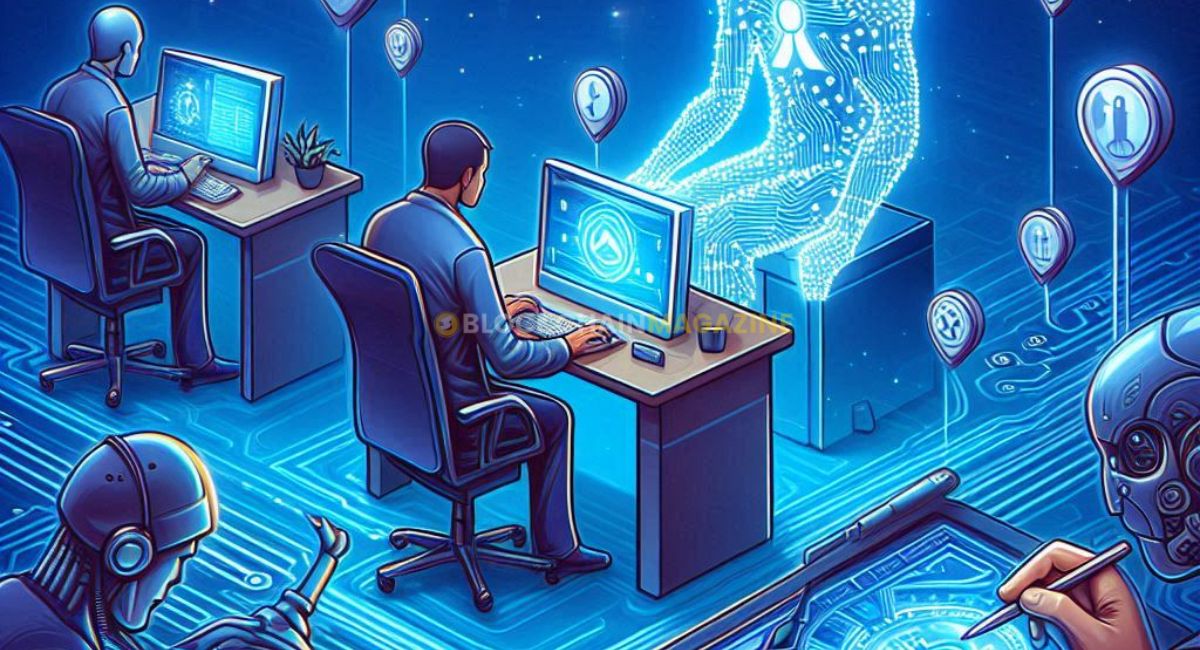DeFi vs. Traditional Banking: Who Wins the Future of Finance In Best Ways In 2024
The world of finance is changing rapidly, with Decentralized Finance (DeFi) challenging traditional banking systems. This article explores the differences between these two financial models, highlighting their unique features, benefits, and challenges. As we dive into this comparison, we will uncover how DeFi may reshape the future of financial services and what that means for consumers and institutions alike.
Key Takeaways
- DeFi cuts out the middleman, allowing for quicker and cheaper transactions.
- Transparency in DeFi lets users see how their money is managed, unlike traditional banks.
- DeFi is accessible to anyone with an internet connection, breaking geographical barriers.
- Users can earn higher interest rates in DeFi compared to traditional banks.
- The future may see a mix of DeFi and traditional banking, combining the best of both worlds.
The Evolution of Financial Systems
Historical Context of Traditional Banking
Traditional banking has been around for centuries, evolving from simple barter systems to complex financial institutions. Banks have historically acted as intermediaries, managing deposits and loans. They have played a crucial role in economic growth but often come with high fees and limited access for many people.
The Rise of Decentralized Finance
In recent years, decentralized finance (DeFi) has emerged as a revolutionary alternative. By using blockchain technology, DeFi eliminates the need for intermediaries, allowing users to lend, borrow, and trade directly. This shift is transforming the financial landscape, making services faster, cheaper, and more transparent. The impact of decentralized finance on traditional banking is significant, as it challenges the old systems and offers new opportunities.
Key Milestones in DeFi Development
Several key milestones mark the rise of DeFi:
- 2017: The launch of Ethereum, enabling smart contracts.
- 2018: The introduction of decentralized exchanges like Uniswap.
- 2020: The explosion of yield farming and liquidity mining.
These milestones highlight how DeFi is reshaping finance, providing access to services that were once limited to traditional banks.
The evolution of financial systems shows a clear trend: as technology advances, the need for traditional intermediaries diminishes, paving the way for a more inclusive financial future.
Core Principles: DeFi vs. Traditional Banking
Centralization vs. Decentralization
One major difference between DeFi and traditional banking is the presence of intermediaries. Traditional banks rely on institutions like central banks to manage transactions. In contrast, DeFi operates on decentralized networks, using blockchain technology to eliminate these middlemen. This means that transactions can happen almost instantly and at a much lower cost. For example, while a bank might take days to process a cross-border transfer, DeFi can do it in minutes.
Transparency and Trust
In traditional banking, many processes are hidden from customers. Banks control information about loans and fees, leaving users uncertain. However, DeFi changes this by being built on public blockchains. All transactions are visible, allowing users to see how their funds are managed. This transparency builds trust among users.
- Open transactions: Anyone can verify them.
- No geographical limits: Users can access services from anywhere.
- No credit checks: Participation doesn’t require a good credit score.
Accessibility and Inclusivity
DeFi is more accessible than traditional banking. There are no minimum balances or long account setup processes. All you need is an internet connection. This is especially beneficial for people in areas with limited banking services.
In a world where many are excluded from traditional finance, DeFi offers a way for everyone to participate in the global economy.
In summary, while traditional banking has its strengths, DeFi presents a new way of handling finance that emphasizes decentralization, transparency, and accessibility.
| Feature | Traditional Banking | Decentralized Finance (DeFi) |
|---|---|---|
| Intermediaries | Yes | No |
| Transaction Speed | Slow | Fast |
| Transparency | Low | High |
| Accessibility | Limited | Global |
Financial Products and Services
Lending and Borrowing
In the world of finance, lending and borrowing are crucial. DeFi makes it easier for anyone to get loans without the usual hurdles. Traditional banks often require credit checks and can be exclusive, while DeFi aims to offer financial services to anyone with internet access. Here are some key points about lending and borrowing in both systems:
- DeFi allows users to borrow against their crypto assets without lengthy processes.
- Traditional banks often have strict requirements and fees.
- Smart contracts in DeFi automate the lending process, making it faster.
Asset Management
Managing assets is another area where DeFi shines. In traditional banking, asset management can be costly and limited. In contrast, DeFi offers:
- Lower fees due to reduced overhead costs.
- Greater accessibility for small investors.
- Innovative tools like yield farming and liquidity pools.
Payment Systems
Payment systems are essential for any financial system. DeFi provides a new way to handle payments:
- Faster transactions without intermediaries.
- Lower costs compared to traditional banking fees.
- Global reach, allowing anyone to send money anywhere.
In summary, the financial products and services in DeFi are designed to be more inclusive and efficient than those in traditional banking. As the landscape evolves, we may see a blend of both systems, leveraging the best of each.
Technological Innovations
Blockchain Technology
Blockchain is the backbone of decentralized finance (DeFi). It allows for secure and transparent transactions without the need for a middleman. This technology ensures that all transactions are recorded and cannot be altered. Here are some key features of blockchain:
- Decentralization: No single entity controls the network.
- Immutability: Once data is recorded, it cannot be changed.
- Transparency: All transactions are visible to everyone on the network.
Smart Contracts
Smart contracts are self-executing contracts with the terms of the agreement directly written into code. They automatically enforce and execute agreements when conditions are met. This innovation reduces the need for intermediaries and speeds up transactions. Some benefits include:
- Efficiency: Transactions happen quickly without delays.
- Cost-Effective: Reduces fees associated with traditional contracts.
- Trust: Parties can trust that the contract will execute as agreed.
Digital Ledger Technologies
Digital ledger technologies (DLT) enhance the way transactions are recorded and shared. They provide a secure and efficient way to manage data. DLT can:
- Improve accuracy by reducing human error.
- Enable real-time updates, making information more current.
- Support various applications beyond finance, such as supply chain management.
The rise of DeFi is reshaping how we think about finance. With innovations like blockchain and smart contracts, the future looks promising for more inclusive and efficient financial systems.
In summary, technological innovations in DeFi are paving the way for a new era in finance, making it more accessible and efficient for everyone. As we look ahead, the potential for these technologies to transform traditional banking is immense.
Economic and Social Impacts
Financial Inclusion
Decentralized finance (DeFi) is changing the way people access financial services. It opens doors for many who were previously left out. With DeFi, anyone with an internet connection can participate in financial activities like lending and borrowing. This is a big shift from traditional banking, which often requires a lot of paperwork and can exclude certain groups.
Economic Efficiency
DeFi platforms can operate with lower costs because they cut out the middlemen, like banks. This means that:
- Transaction fees are lower.
- Loans can be more affordable.
- Investors can earn higher returns.
These changes can lead to a more efficient economy where resources are allocated better.
Social Equity
One of the most exciting aspects of DeFi is its potential to promote social equity. By allowing everyone to access financial services equally, it helps reduce the gap between different social classes. This can lead to:
- More opportunities for entrepreneurs.
- Increased investment in local communities.
- A fairer distribution of wealth.
The rise of DeFi is not just about technology; it’s about creating a fairer financial system for everyone.
In summary, the impact of DeFi on economic and social aspects is profound. It challenges the traditional banking system and offers new opportunities for many people.
Challenges and Risks
Regulatory Hurdles
The world of decentralized finance (DeFi) is still figuring out how to fit into existing laws. Many DeFi platforms operate without clear regulations, which raises concerns about illegal activities like money laundering. Governments are trying to catch up, but finding a balance between innovation and regulation is tough.
Security Concerns
Security is a big worry in DeFi. Unlike traditional banks, which have strict rules and insurance for deposits, DeFi platforms can be hacked. High-profile hacks, like the one that stole millions from Harvest Finance, show that users can lose their money if a platform is compromised. There’s no safety net like the FDIC in traditional banking.
Market Volatility
DeFi often relies on cryptocurrencies that can change in value very quickly. This can lead to situations where users lose their assets if the value of their collateral drops too low. Traditional banks usually deal with more stable assets, making them less risky in this regard.
| Challenge | DeFi Impact | Traditional Banking Impact |
|---|---|---|
| Regulatory Issues | Unclear laws, potential illegal use | Established regulations |
| Security Risks | Vulnerable to hacks | Insured deposits |
| Market Volatility | High risk of asset loss | More stable asset management |
DeFi offers exciting opportunities, but it also comes with significant risks that users must understand before diving in.
Conclusion
In summary, while DeFi presents a new wealth frontier with blockchain and real-world assets, it faces challenges that could hinder its growth. Users need to be aware of these risks to make informed decisions about their finances.
Future Prospects
Hybrid Financial Models
The future of finance may not be a battle between DeFi and traditional banking, but rather a blend of both. Hybrid financial models could combine the strengths of decentralized finance with the stability of traditional systems. This approach may lead to more efficient services and better user experiences.
Potential for Mass Adoption
As technology improves, the potential for mass adoption of DeFi solutions grows. More people are becoming aware of the benefits of decentralized finance, such as lower fees and greater accessibility. If these trends continue, we could see a significant shift in how people manage their finances.
Long-term Sustainability
For DeFi to thrive, it must address key challenges like security and regulation. Long-term sustainability will depend on how well these issues are managed. If DeFi can prove its reliability and safety, it may become a mainstream option for financial services.
The future of finance is likely to be shaped by both innovation and regulation, creating a landscape where both DeFi and traditional banking coexist.
Summary Table of Future Prospects
| Aspect | DeFi Potential | Traditional Banking Potential |
|---|---|---|
| User Accessibility | High | Moderate |
| Cost Efficiency | Very High | Low |
| Regulatory Compliance | Uncertain | High |
| Innovation Speed | Rapid | Slow |
| Trust and Security | Developing | Established |
Conclusion
The world of finance is changing, and decentralized finance (DeFi) is leading the way. While traditional banking has been around for a long time and offers a sense of security, it often comes with high fees and slow processes. DeFi, on the other hand, provides quick and affordable services without the need for banks. It opens doors for many people who couldn’t access financial services before. Although DeFi is still new and has its challenges, it shows great promise for the future. As both systems evolve, we might see a mix of the best features from each, creating a more efficient and inclusive financial world.
Frequently Asked Questions
What is the main difference between DeFi and traditional banking?
The biggest difference is that DeFi doesn’t use middlemen like banks. Instead, it uses computer programs to manage transactions directly.
How does DeFi provide more transparency?
DeFi allows users to see and check the code that runs its operations. This means people can understand how things work and trust the system more.
Can anyone use DeFi services?
Yes! DeFi services can be accessed by anyone with an internet connection, no matter where they are in the world.
What are the risks associated with DeFi?
While DeFi offers many benefits, it also comes with risks like potential hacks, market changes, and less regulatory protection.
How do people earn money with DeFi?
People can earn money in DeFi by lending their assets, earning interest, or participating in staking, which usually offers higher returns than traditional banks.
Will traditional banks disappear because of DeFi?
It’s unlikely that traditional banks will completely disappear. They may need to adapt and incorporate some DeFi features to stay relevant.
Stay informed with daily updates from Blockchain Magazine on Google News. Click here to follow us and mark as favorite: [Blockchain Magazine on Google News].
Get Blockchain Insights In Inbox
Stay ahead of the curve with expert analysis and market updates.
latest from tech
Disclaimer: Any post shared by a third-party agency are sponsored and Blockchain Magazine has no views on any such posts. The views and opinions expressed in this post are those of the clients and do not necessarily reflect the official policy or position of Blockchain Magazine. The information provided in this post is for informational purposes only and should not be considered as financial, investment, or professional advice. Blockchain Magazine does not endorse or promote any specific products, services, or companies mentioned in this posts. Readers are encouraged to conduct their own research and consult with a qualified professional before making any financial decisions.

 Bitcoin
Bitcoin  Ethereum
Ethereum  Tether
Tether  XRP
XRP  Solana
Solana  Dogecoin
Dogecoin  USDC
USDC  Lido Staked Ether
Lido Staked Ether  Cardano
Cardano  TRON
TRON  Avalanche
Avalanche  Toncoin
Toncoin  Wrapped stETH
Wrapped stETH  Chainlink
Chainlink  Shiba Inu
Shiba Inu  Wrapped Bitcoin
Wrapped Bitcoin  Sui
Sui  Hedera
Hedera  Polkadot
Polkadot  Stellar
Stellar  WETH
WETH  Hyperliquid
Hyperliquid  Bitcoin Cash
Bitcoin Cash  LEO Token
LEO Token  Uniswap
Uniswap  Pepe
Pepe  Litecoin
Litecoin  Wrapped eETH
Wrapped eETH  Ethena USDe
Ethena USDe  NEAR Protocol
NEAR Protocol  USDS
USDS  Aptos
Aptos  Internet Computer
Internet Computer  Aave
Aave  Mantle
Mantle  POL (ex-MATIC)
POL (ex-MATIC)  Cronos
Cronos  Ethereum Classic
Ethereum Classic  WhiteBIT Coin
WhiteBIT Coin  Virtuals Protocol
Virtuals Protocol  Render
Render  Monero
Monero  Dai
Dai  MANTRA
MANTRA  Artificial Superintelligence Alliance
Artificial Superintelligence Alliance  Bittensor
Bittensor  Arbitrum
Arbitrum 



